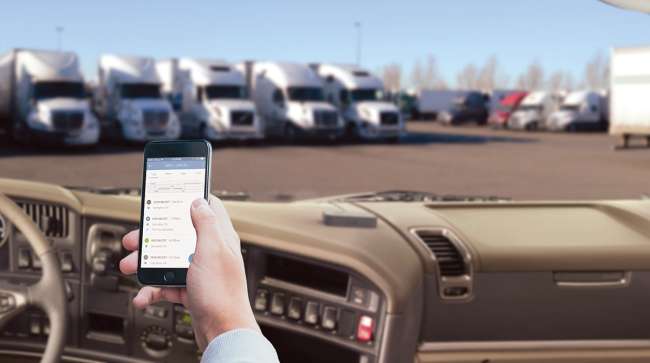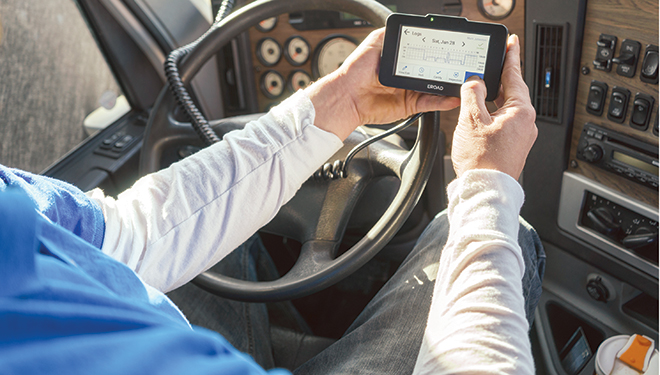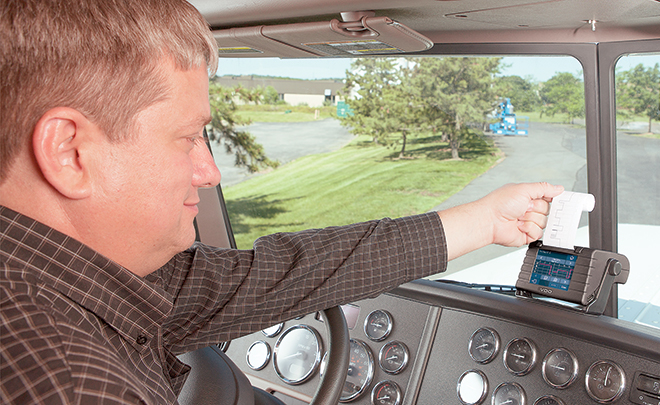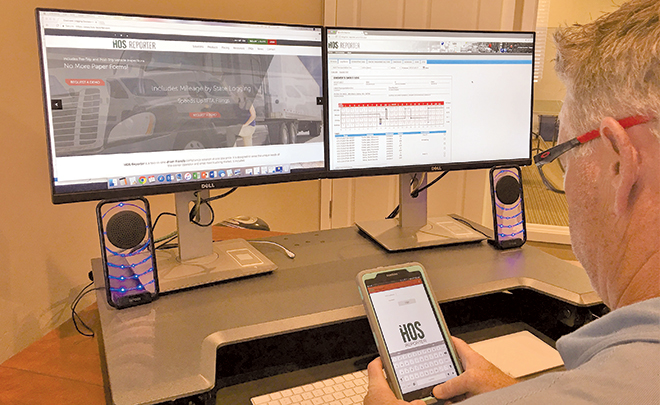New ELD Vendors Flood Market as Mandate Nears

A growing number of technology vendors have been flooding the market with new electronic logging device products ahead of the federal ELD mandate.
Fleets and owner-operators face a dizzying array of choices. The Federal Motor Carrier Safety Administration’s website currently lists nearly 80 products self-certified by vendors, and the list keeps growing.
These vendors include telematics companies that have been offering some version of electronic logs for many years, a truck manufacturer, a new company established by an engine manufacturer and a slew of new companies focused solely on providing ELDs.
Many of the new ELD vendors are targeting owner-operators and small fleets, the segment of the industry that is least likely to have already made the move to e-logs.
LIVEONWEB: Watch 'The ELD Landscape Ahead,' Aug. 23, noon EDT
YOUR GUIDE TO THE MANDATE: Downloadable PDF.
The seemingly sudden appearance of so many ELD vendors should surprise no one. By establishing the mandate, the federal government created a huge demand for ELD products. In fact, there is growing concern that there may not be enough supply to meet demand in the months ahead.
“A recent survey we conducted revealed that many carriers are planning to wait until the third and fourth quarters to deploy ELDs,” said analyst Clem Driscoll, founder and principal of C.J. Driscoll & Associates, a research and consulting firm. “The demand is ramping up. It will get higher as the deadline approaches.”
How bad will it be?
“We anticipate a logjam of work as the December deadline gets closer,” said Deryk Powell, president and chief operating officer at Velociti, which offers technology deployment services to the transportation industry. “One of the concerns is that there is a percentage of the industry that seems to be holding out in hopes the mandate may be postponed, relaxed or canceled.”
Many of the ELD systems come with additional features, such as driver vehicle inspection reports and IFTA fuel-tax reporting. If the ELD is part of a telematics package, standard functionality might include asset tracking, fuel consumption, driver behavior monitoring and engine diagnostics. Gaining these benefits sooner rather than later can be an additional reason to avoid waiting.
“With a high demand for ELDs in the coming months, fleets who have not chosen an ELD provider run the risk of demand exceeding supply,” Pegasus TransTech Chief Operating Officer Don Burke said. “Implementing an ELD solution now not only removes this headache but also provides benefits that fleets and drivers can realize now.”
Pegasus TransTech entered the ELD market late last year when it introduced its Transflo T7 ELD through a partnership with Geotab.

ERoad
FMCSA’s approach of allowing vendors to self-certify their products has raised some eyebrows. “Being [listed] on the FMCSA website is no guarantee that the ELD is compliant,” said Yves Provencher, director of PIT Group. Based in Pointe-Claire, Quebec, PIT Group is an independent organization that provides testing services to the transportation industry.
“At the request of many fleets and law firms, PIT Group developed an independent ELD verification program,” Provencher said. “We basically audit the capability of the ELD solution to make sure that the ELD can actually do what FMCSA specifies.”
One telematics company that has used PIT Group is ERoad.
“There are over 200 tests that the FMCSA document wants ELD vendors to perform,” said Norm Ellis, president of ERoad’s business in North America. “We did all of those and about 100 more of our own for different use cases. We wanted to make sure the ERoad ELD could stand up to all of the challenges that carriers would face. We also went to PIT Group to get a third-party validation.”
Other vendors are using additional outside sources to audit their products.
ONE20 consulted with former FMCSA Administrator Annette Sandberg.
“She audited our ELD before we submitted it to FMCSA,” said ONE20 President Christian Schenk. “I would never sign a certificate of compliance until Annette Sandberg told me it was right. It took us two months after we said we were good before she said we were good.”
Gorilla Safety hired KPMG, one of the “big four” accounting firms, to review its testing procedures and processes, said Mark Walton, Gorilla Safety’s co-founder and CEO.
“They evaluated our testing methodologies, and it’s really paid off for us,” he said. “This was a big decision for us, because we’re a new company.”
In addition to conducting audits, Fleetmatics has had its ELD vetted by Department of Transportation managers and executives from fleets large and small, said Todd Ewing, Fleetmatics’ director product marketing.
“We are also taking extra steps beyond simply self-certifying for the ELD final rule to ensure customers can have total confidence in our approach,” he said.
Truckstop.com also seeks to bring some clarity to the ever expanding ELD market. To help point its carrier customers toward reliable ELD options, the load board operator plans to partner with several ELD vendors and market their products through Truckstop.com.
“We want to be a destination for the industry to find a vetted partner for an ELD platform,” said Thayne Boren, general manager of Truckstop.com’s mobile division.
Truckstop.com will vet those ELD suppliers based on factors such as their hardware strategies, customer support levels and data collection capabilities.
It is of particular importance that vendors provide around-the-clock customer support and have a plan in place to proactively ship replacement devices in the event of a malfunction, Boren said.

Continental Corp.
Truckstop.com previously intended to launch its own proprietary ELD, but dropped that plan in favor of partnering with a variety of existing vendors after deciding that approach would better support its entire customer base, including carriers of various sizes as well as third-party logistics firms.
Another way to establish credibility is to be associated with a trusted brand.
ZED Connect, a new ELD vendor, was established by independent engine maker Cummins Inc.
“Being ‘powered by Cummins’ not only supports the launch of a new company but also helps ZED customers know that we’re stable, credible and intent on solving additional fleet needs beyond ELD,” ZED Connect CEO Skip Kinford said.
Fleets and owner-operators are encouraged to do their homework as they consider potential ELD products for their trucks.
“I think the FMCSA needs to set a higher bar for approved ELD vendors,” said Shoaib Makani, co-founder and CEO of KeepTruckin. “Today, anyone can throw their name up on the list of self-certified ELD vendors, which creates a lot of noise and may lead to poor purchase decisions. Before signing a contract, carriers should consider the operating history of the vendor and test the ELD firsthand with their drivers to make sure it is reliable and easy to use.”
In the process of choosing an ELD, fleets will have opportunities to obtain other valuable capabilities.
“It’s important in this phase of selecting an ELD solution that fleets look beyond the ELD requirements by finding a solution that not only addresses their needs today but also will grow with their business well into the future,” said Scott Sutarik, associate vice president of commercial vehicle solutions at Geotab.
In terms of the technical details of ELD software, one of the concerns is how data will be transferred to enforcement officers.
The VDO RoadLog ELD includes an integrated printer.

HOS Reporter
“The printer makes it extremely simple for the driver as well as for the enforcement officer to do a manual inspection by the roadside,” said Alexis Capelle, ELD program manager in North America for Continental Corp., the supplier of VDO RoadLog.
This approach presents data in the same format as paper logs, Capelle said.
“The beauty of the printout is that you actually have a format that is very easy for enforcement to read. The officer doesn’t have to punch buttons and go through five different screens to get all of the information. There’s no training for enforcement. That means inspections will go fast.”
An additional benefit is the personal data on a mobile device is not being displayed.
“With the printout, you show enforcement only the information that they are meant to see during an inspection,” Capelle said. “You don’t hand over your personal life with your cellphone.”
The ERoad ELD includes a cable that allows drivers to hand the tethered device to enforcement officials. “Our ELD cannot be taken away from the truck, but there is also a curly cable that allows the driver to hand the device to an enforcement official if requested,” Ellis said.
One of the advantages of having a tethered solution, Ellis said, is that enforcement officers see only what they’re allowed to see.
“If you hand them your phone or tablet, you’re taking the risk that they will see personal information that you don’t want them to see,” he said. “With the ERoad ELD, the driver puts the unit into display mode and hands the unit to the officer. The officer can go through the logs, just as FMCSA has described. The officer can’t go beyond that. The only way to get back into the application is for the driver to re-enter his PIN.”
For ELD products that do use mobile devices as the display, one of the risks is a lost, stolen or damaged device.
The HOS Reporter hardware is designed to cache data that is being transmitted to a driver’s mobile device.
“If the driver loses or damages his tablet or phone, the data is still there in our hardware,” said Craig Jolly, managing partner at HOS Reporter.
“With many other systems that rely on mobile devices, the data would be lost and the driver would not be able to reconstruct his record on a new device,” he said. “With HOS Reporter, once a new device is made available, this cached data can be used to bring the driver’s log back into compliance with the mandate.”
Given that many large fleets already use e-logs and employ the services of telematics providers, many of the ELD vendors are focused on serving small fleets and owner-operators.
When Navistar Inc. announced its own aftermarket ELD, the truck maker said the product was designed to bring technology to owner-operators and small and midsize fleets.
The HOS Reporter ELD was built “from the ground up to be owner-operator friendly,” Jolly said. “That market is underserved. The larger fleets don’t really need our help. We want to help the owner-operators.”
The focus for ONE20 is similar.
“ONE20 is not an ELD company,” Schenk said. “We’re a driver community that happens to have an ELD because the drivers needed one that was built for them. That’s why we did it.” ³
Seth Clevenger, managing editor of features, contributed to this story.




